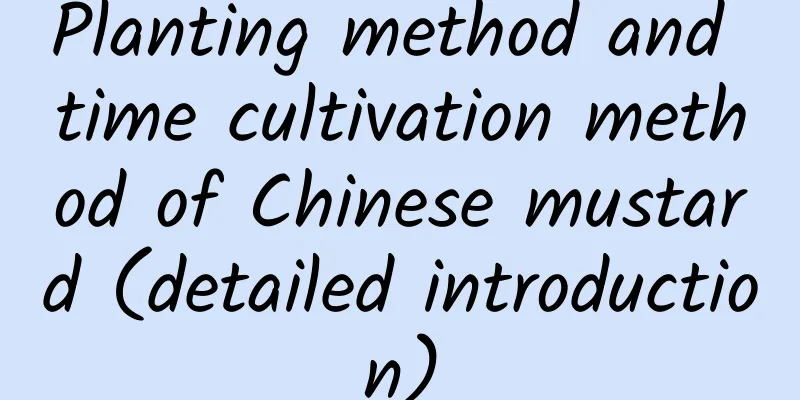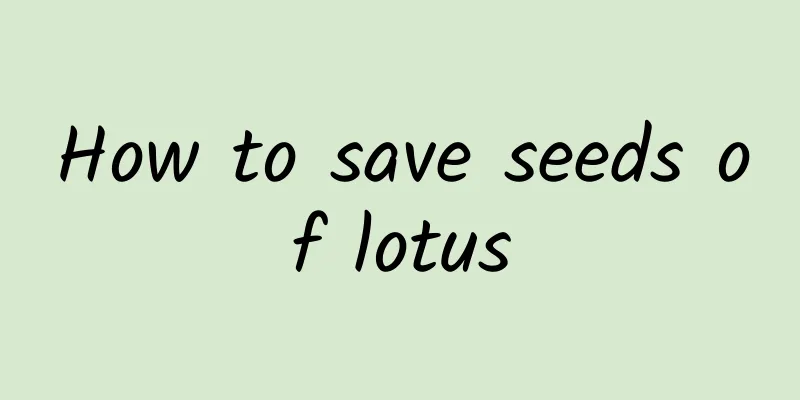Planting method and time cultivation method of Chinese mustard (detailed introduction)

Suitable planting time for Chinese potherb mustardThere are generally three planting seasons for Chinese mustard, namely spring, autumn and summer. The spring planting time is generally between February 16 and April 16, the autumn planting time is generally between September and October, and the summer planting time is generally between July and August. Methods and key points of planting Chinese mustard1. Land preparation Chinese mustard is suitable for planting in loose, nutrient-rich soil. Level the land and make it into strips. Build a drainage ditch. The drainage ditch should preferably be one foot wide. The weeds that are cleared should be removed in time. 2. Seedling cultivation The cultivation of Chinese mustard seedlings requires a certain degree of fertility in the soil, and good drainage. Generally, you can use decomposed farmyard manure to make compost one month before the seedlings are grown, and then sow the seeds into the soil. They do not need to be buried too deep, about 2-3 cm is enough. 3. Planting Chinese mustard should be planted as soon as possible, preferably around 8-10 am. There should be soil at the roots of the planted seedlings. Transplant them when the Chinese mustard seedlings grow to about 12-15 cm. The spacing between transplanted seedlings should be controlled at 20-30 cm. Be sure to water them well after transplanting. Points to note in daily management of Chinese mustard1. Water: During the period of vigorous growth of Chinese potherb must provide sufficient water to keep the soil slightly moist, but not waterlogged. If Chinese potherb mustard does not absorb enough water, the fiber content will increase, resulting in a decline in quality. 2. Pruning: During the growth period of Chinese mustard, the outermost stems and leaves at the roots will rot. They should be pulled out and pruned appropriately to prevent the rotten stems and leaves from infecting the growth of other normal stems and leaves. The soil should also be loosened and weeds removed appropriately. 3. Pests and diseases: The common pest of Chinese mustard is the larvae of the yellow-striped flea beetle, which affects the growth of the roots. It can be solved by spraying diluted chlorpyrifos. The common disease is root knot. When root knot occurs, it can be effectively prevented and controlled by watering with prepared lime water. |
<<: Chrysanthemum seed planting method and time cultivation management technology (full points)
Recommend
When to water gardenia
1. Watering time The weather is hot in summer and...
How to propagate the flower
Propagation by division Division propagation is o...
Do irises prefer shade or sun?
Do irises prefer shade or sun? Iris is very easy ...
How to prune lace golden dew after flowering
Pruning lace lilies after flowering After the lac...
What flowers can be watered with fermented black bean water? Is it good to water flowers with fermented black bean water?
The effect of black bean fermented water on water...
Podocarpus meaning
1. Attracting Wealth The Podocarpus plant is tall...
How to grow the fairy tree and what to pay attention to
Growth habits of the fairy tree The fairy tree li...
How to grow Clivia to make it flourish
1. Suitable temperature It likes a moist and semi...
African jasmine cultivation methods and precautions
Choose the right soil There are different soil re...
Where does winter melon grow and where does it mainly come from?
Winter melon growth habits The root system of win...
Advantages and disadvantages of Xiangyun rose
When the Fragrant Cloud Rose blooms, its flowers ...
How to grow the lucky tree
1. Soil When breeding, use leaf mold, river sand,...
How to grow Zhujiao in water
1. Breeding methods 1. Container: The stem of thi...
How to transplant Hongyun Dangtou
1. Preparation 1. Soil: 1 part expanded clay, 2 p...
Do this for hydroponic flowers to prevent yellow leaves from appearing!
Hydroponic flower processing method If we grow fl...









